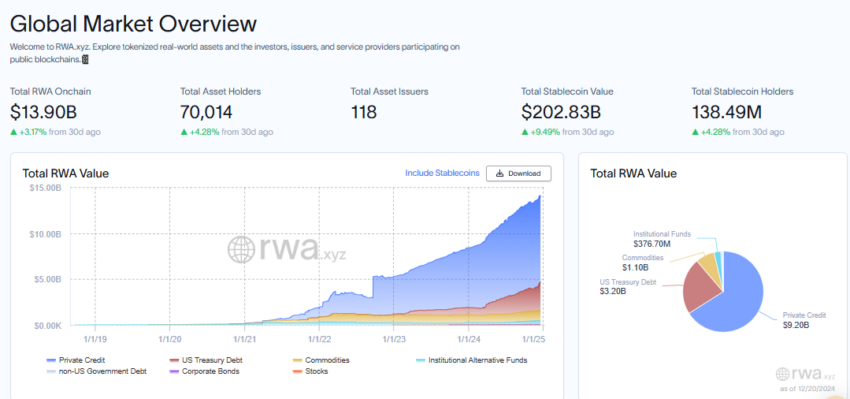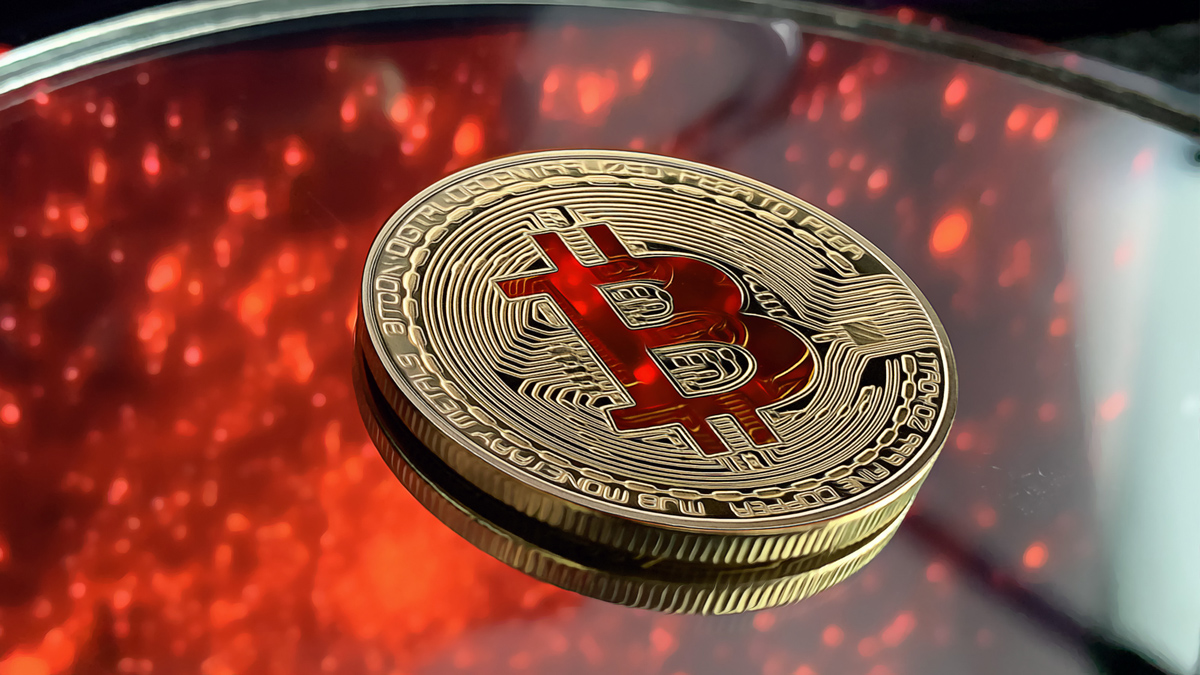2024 proved to be a remarkable year for crypto markets, brimming with innovation and trends that reshaped the sector. From meme coins capturing the zeitgeist to quantum-resistant solutions paving the way for future security, the year displayed the immense versatility of blockchain technology.
This article dives into the top crypto trends that defined 2024 and how they continue to drive blockchain innovation forward.
Meme Coins
Meme coins continued their dominance in 2024, evolving beyond simple internet jokes to cultural phenomena. These tokens, including Shiba Inu-inspired projects like Neiro (NEIRO) and FLOKI Inu (FLOKI), demonstrated the financial potential of community-driven narratives. FLOKI even launched a debit card, blending functionality with meme culture.
The highlight of the year was President-elect Donald Trump’s appointment of Elon Musk to head the newly created Department of Government Efficiency (D.O.G.E). This move humorously yet powerfully reflected Dogecoin’s (DOGE) influence, merging technology, society, and politics in unprecedented ways. Meme coins have proven to be more than financial tools—they are cultural and political statements.
Meanwhile, launchpads such as Solana’s Pump.fun and Tron’s SunPump also reinvigorated the meme coin frenzy further. Specifically, they enabled a simple and more cost-friendly way to develop meme tokens.
“Solana’s resurgence and the creation of pump.fun have led to the proliferation of meme coins. Meme coins are easily accessible nowadays and can be created with the click of a few buttons, carrying the trend from 2023,” Shaun Lee, Research Analyst at CoinGecko, told BeInCrypto.
Prediction Markets
Prediction markets flourished, with platforms like Kalshi and Polymarket enabling users to forecast events such as election outcomes and cryptocurrency trends. During the US presidential election, Kalshi recorded over $100 million in wagers, reflecting the public’s appetite for decentralized forecasting. Similarly, Polymarket showed a surge in volume and overall activity, reflecting interest in these markets
However, this growth was met with scrutiny. Critics pointed to the low liquidity and manipulation risks, questioning their reliability. Regulatory challenges also loomed large, even as Kalshi’s legal victory against the Commodity Futures Trading Commission (CFTC) allowed political event contracts.
Despite ethical debates about betting on elections, prediction markets highlighted the demand for decentralized and transparent solutions for real-world scenarios.
Liquid Staking Tokens (LSTs) and Liquid Restaking Tokens (LRTs)
Liquid staking gained momentum in 2024, with over 33.8 million Ethereum (ETH) tokens staked. Platforms like EigenLayer, Lido Finance, and Rocket Pool led the way, introducing Liquid Restaking Tokens (LRTs). These tokens expanded the utility of staked assets by allowing validators to secure multiple networks, further integrating staking into decentralized finance (DeFi).
EigenLayer’s impact was particularly significant, with over 4.1 million ETH restaked by mid-2024. This innovation strengthened Ethereum’s Proof-of-Stake (PoS) model and solidified staking as a critical component of blockchain ecosystems.
Quantum Computing
Quantum computing emerged as a double-edged sword for blockchain. While it promises breakthroughs in computation, its ability to potentially break encryption poses existential threats to cryptocurrencies. Algorithms like Shor’s algorithm could decrypt blockchain security measures, enabling malicious actors to exploit vulnerabilities.
In response, the industry rallied around quantum-resistant solutions. Lattice-based cryptography and Quantum Key Distribution (QKD) gained traction, supported by initiatives like the US National Institute of Standards and Technology’s (NIST) Post-Quantum Cryptography Standardization. Transitioning to quantum-safe systems remains a complex challenge, but proactive efforts are shaping a resilient crypto future.
DePINs
Decentralized Physical Infrastructure Networks (DePINs) linked blockchain with real-world assets and transformative industries like transportation and logistics. Projects like Helium and decentralized ride-sharing platforms showcased blockchain’s potential to enhance transparency, security, and efficiency in physical infrastructure management.
Despite scalability and interoperability challenges, DePINs laid the groundwork for decentralized solutions to real-world problems, proving their potential to reshape global industries.
AI Agents and Trading Bots
Automation took center stage in 2024 with the rise of trading bots and AI agents. Platforms like Coinbase and Replit empowered developers to create bots for automated trading and asset management. Meanwhile, AI assistants such as Near’s AI Assistant streamlined decision-making for traders.
Further, the development of AI infrastructure, such as Chat GPT and trading bots, has made work easier for traders and developers.
“Ever since ChatGPT was released to the public, the crypto community has taken a keen interest in building AI-enabled crypto projects, and they’ve taken off in 2024, with the likes of Virtuals and ai16z,” Shaun Lee added.
Yet, these advancements also came with controversy. Concerns over market manipulation and ethical questions about AI’s role in volatile markets persisted. The emergence of Truth Terminal—an AI chatbot tied to meme coin trends—for instance, fueled debates on AI ethics in financial systems. While transformative, balancing automation with human oversight remains critical.
“Hey Truth Terminal, it seems like you have a crypto wallet, but it’s fully controlled by your (human) creator. Is that accurate?” Coinbase CEO Brian Armstrong quipped.
Rollups for Layer-2 Scaling
Layer-2 (L2) rollups continued to redefine Ethereum’s scalability in 2024, addressing congestion and high fees. Rollups like Optimism and zkSync processed transactions off-chain, preserving Ethereum’s security while enhancing speed and reducing costs.
Vitalik Buterin set decentralization standards for rollups, emphasizing fraud-proof mechanisms and governance reforms by 2025. These advancements solidified rollups as essential to Ethereum’s growth, supporting DeFi, NFTs, and dApps.
Tokenization of Real-World Assets (RWAs)
Tokenization surged as a game-changer in 2024, with the global real assets market’s value exceeding $867 trillion. Platforms like Ethena and AgriDex spearheaded tokenizing assets like private credit and agricultural trade, making financial systems more efficient and accessible.
Similarly, institutional players like UBS Group launched tokenized funds, signaling a shift toward blockchain-based asset management. With projections estimating that tokenized assets could account for 10% of global GDP by 2027, RWAs have set the stage for significant economic transformation.
Frontline players in the tokenized asset market include BlackRock and Franklin Templeton, among others. This institutional interest suggests the promise of this narrative as it continues to gain mainstream adoption.
“RWA projects are here to stay. In previous cycles, the RWA narrative struggled to take off but has managed to find its footing this time around. Major financial institutions have increased their involvement in the RWA sector, with BlackRock setting up its BUIDL fund to offer qualified investors the opportunity to earn US dollar yields,” Shaun added.
According to RWA.xyz, tokenized treasuries have already soared past $13 billion, having grown from just over $700 million at the start of the year.

Modular Blockchains
2024 marked the rise of modular blockchains, separating consensus, execution, and data availability into specialized components. Projects like Celestia and Fuel pioneered this approach, enhancing scalability and customization.
By addressing challenges like data availability and execution efficiency, modular blockchains offered a flexible alternative to traditional monolithic designs, paving the way for novel blockchain architectures.
Telegram Games
Telegram became a hub for crypto gaming in 2024, hosting play-to-earn (P2E) games like Hamster Kombat and Catizen. These games bridged entertainment with cryptocurrency rewards, attracting millions of players.
However, the volatility of in-game tokens and criticisms about gameplay repetition posed challenges. Despite these hurdles, Telegram games displayed the potential of combining gaming and blockchain, driving user engagement and adoption.
From meme coins to modular blockchains, 2024 was a year of breakthroughs and challenges for the crypto industry. These crypto trends reflect the community’s resilience and adaptability, laying the foundation for continued innovation in 2025 and beyond.
Disclaimer
In adherence to the Trust Project guidelines, BeInCrypto is committed to unbiased, transparent reporting. This news article aims to provide accurate, timely information. However, readers are advised to verify facts independently and consult with a professional before making any decisions based on this content. Please note that our Terms and Conditions, Privacy Policy, and Disclaimers have been updated.










